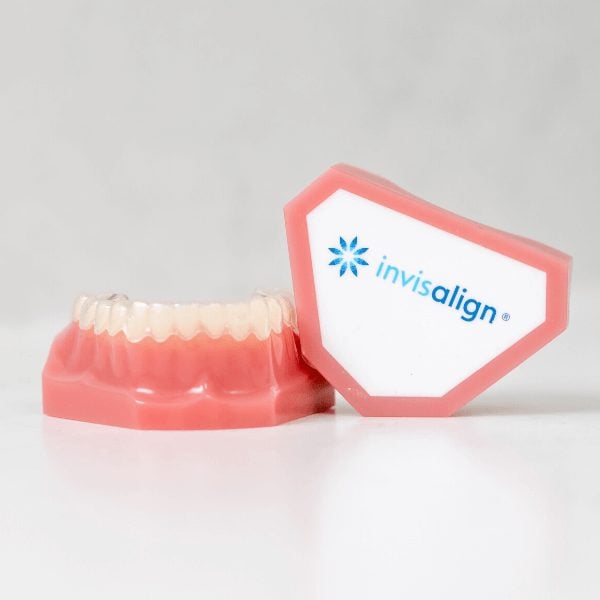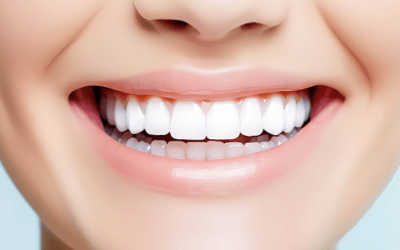Demystifying Invisalign: How Does it Really Work?
If you’re looking for an alternative to traditional metal braces, Invisalign might be the perfect solution for you. This innovative orthodontic treatment uses a series of clear aligners to gradually straighten your teeth, giving you a healthier and more beautiful smile. In this comprehensive guide, we will explore how Invisalign works, the treatment process, and its effectiveness in addressing various dental issues.
What is Invisalign?
Invisalign is an orthodontic treatment that uses removable clear aligners to straighten teeth. Unlike traditional braces, which consist of brackets and wires, Invisalign aligners are made of a transparent plastic material that is virtually invisible when worn. This discreet and comfortable treatment option has gained popularity among adults and teenagers who desire a more aesthetically pleasing alternative to metal braces.
How Does Invisalign Work?
The process of Invisalign treatment involves several steps that work together to gradually move your teeth into their desired positions. Let’s take a closer look at each step:
Step 1: Initial Consultation
The first step in the Invisalign process is a consultation with an Invisalign provider, usually a dentist or orthodontist. During this consultation, the provider will assess your oral health and determine if Invisalign is the right treatment option for you. They will also discuss your treatment goals and answer any questions or concerns you may have.
Step 2: Customised Treatment Plan
If Invisalign is deemed suitable for your needs, the provider will proceed to create a customised treatment plan. This involves taking digital scans or impressions of your teeth, which will be used to create a 3D model of your mouth. Using specialised software, the provider will then design a series of aligners that will gradually move your teeth into their desired positions.
Step 3: Receive Your Aligner Trays
Once your customised aligner trays are ready, you will receive them from your provider. Each tray is designed to be worn for a specific period of time, typically one to two weeks, before progressing to the next tray in the series. The aligners should be worn for a minimum of 22 hours a day, only being removed for eating, drinking, brushing, and flossing.
Step 4: Regular Check-Ups
Throughout your Invisalign treatment, you will have regular check-up appointments with your provider, usually every six weeks. During these visits, your provider will monitor your progress, make any necessary adjustments to your treatment plan, and provide you with new aligner trays. These check-ups are crucial to ensure that your teeth are moving as planned and that your treatment is on track.
Step 5: Completion of Treatment
Once you have completed wearing all of your aligner trays, your Invisalign treatment is almost complete. At this stage, your provider may recommend additional procedures, such as the placement of retainers, to help maintain the new position of your teeth. Retainers are typically worn at night and serve to prevent your teeth from shifting back to their original positions.
What Dental Issues Can Invisalign Fix?
Invisalign is capable of addressing a wide range of dental issues, including:
- Crowded teeth: When there is insufficient space in the jaw for all the teeth to align properly, causing them to overlap or twist.
- Overbite: When the upper teeth excessively overlap the lower teeth, leading to discomfort and potential dental problems.
- Underbite: When the lower teeth protrude beyond the upper teeth, resulting in an improper bite and potential chewing difficulties.
- Crossbite: When the upper and lower teeth do not align properly, causing one or more upper teeth to bite inside the lower teeth.
- Gap teeth: When there are spaces or gaps between teeth, which can affect the appearance and functionality of the smile.
- Open bite: When the upper and lower teeth do not meet when biting down, causing difficulties in chewing and speaking.
It’s important to consult with an experienced Invisalign provider to determine if your specific dental issue can be effectively treated with clear aligners.
Does Invisalign Really Work?
The effectiveness of Invisalign has been proven through research and the experiences of countless patients. While individual results may vary, Invisalign has been shown to be as effective as traditional braces in correcting mild to moderate dental issues. It is important to note that compliance with wearing the aligners is crucial for achieving the desired results. The aligners should be worn for the recommended amount of time each day to ensure that the teeth move as planned.
In addition to being effective, Invisalign offers several advantages over traditional braces. The aligners are virtually invisible, making them a more aesthetically pleasing option. They are also removable, allowing for easier oral hygiene maintenance and the ability to eat and drink without restrictions. However, it is important to follow the guidelines provided by your Invisalign provider to ensure the success of your treatment.
How Long Does Invisalign Treatment Take?
The duration of Invisalign treatment varies depending on the complexity of the dental issues being addressed. On average, treatment with Invisalign takes about 9-18 months, but it can be shorter or longer depending on individual cases. During your initial consultation, your Invisalign provider will be able to give you an estimate of how long your specific treatment is expected to take.
Ready to Transform Your Smile?
Invisalign can effectively address a wide range of dental issues, and its success is dependent on your compliance with wearing the aligners as instructed. At LifestyleSmiles in Melbourne, we are a Top 1% Diamond Invisalign Provider and have helped hundreds of patients achieve their dream smile.
If you are considering Invisalign treatment, we would love to help! Give our friendly team a call on (03) 9593-1811 or book a consultation with our Invisalign specialists today.
Disclaimer: The material posted is for informational purposes only and is not intended to substitute for professional medical advice, diagnosis or treatment. Results vary with each patient. Any dental procedure carries risks and benefits. If you have any specific questions about any dental and/or medical matter, you should consult your dentist, physician or other professional healthcare providers.
Services we mentioned:

Cosmetic Dentistry

Invisalign

Dental Veneers
Related Articles
What is All on 4 Dental Implants? What You Need to Know
Discover the cost of Invisalign in Melbourne with our comprehensive guide. From pricing & payment options to finding the perfect Invisalign dentist.
Breaking Down the Cost of Veneers in Melbourne
Discover the cost of Invisalign in Melbourne with our comprehensive guide. From pricing & payment options to finding the perfect Invisalign dentist.










